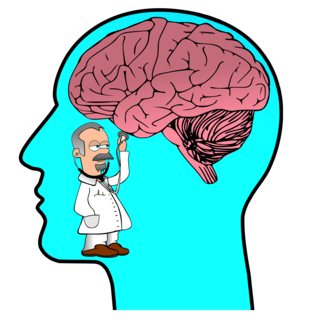Personality
Why Do Mental Health Professionals Avoid Diagnosing Borderline Personality Disorder?
They have some pretty good reasons.
Posted September 5, 2021 Reviewed by Abigail Fagan
Key points
- Mental health providers can be reluctant to diagnose BPD and other personality disorders due to diagnosis criteria, insurance, and stigma.
- Not diagnosing BPD, where appropriate, can adversely affect treatment.
- Traits of BPD can be communicated without formally diagnosing the full personality disorder.

Many mental health professionals are reluctant to diagnose Borderline Personality Disorder (BPD) as well as other personality disorders. This can be problematic for individuals and family members of BPD sufferers who are seeking help for symptoms of this disorder. They often blame professionals and question their competence for not diagnosing these disorders when symptoms are prevalent. This post explains three reasons why mental health providers may be reluctant to use this category of diagnoses.
Reason #1: Difficulty Identifying Certain Criteria
According to the Diagnostic and Statistical Manual (5th Edition) (APA, 2013), diagnosis of a personality disorder, requires that the person must have:
Criterion A: “An enduring pattern of inner experience and behavior that deviates markedly from the expectations of the individual’s culture.”
and
Criterion B: “The enduring pattern is inflexible and pervasive across a broad range of personal and social situations.”
Valid diagnosis requires the diagnostician to sample behavior in a broad range of settings. Most clinicians see their patients only in one setting (the office), which not only does not meet the criteria of a “broad range” of situations, it is not even a typical setting. The only other way to sample behavior outside of the office is to interview collaterals, or people who work or play with the patient. Interviewing collaterals is generally only done in forensic settings. This criterion makes the diagnosis of any personality disorder nearly impossible in a traditional mental health or hospital setting.
Reason #2: Medical Insurance Reimbursement
Most medical insurances do not cover treatment for personality disorders. Claims submitted with these diagnostic codes are generally rejected without justification. Individuals with BPD very often have comorbid disorders, such as anxiety or depression, so therapists use these codes as primary.
Reason #3: Stigma
A diagnosis of personality disorder can be stigmatizing to people. This is especially true for Borderline, Narcissistic and Antisocial Personality Disorders. This is probably largely due to the portrayal of these disorders by the media as being caustic or dangerous to the general population.
One major consequence of clinicians avoiding the diagnosis of BPD is that in many situations these symptoms do not get addressed. The clinicians diagnose the comorbid disorder, such as anxiety, depression, posttraumatic disorder, etc., and this becomes the focus of treatment.
For individuals who have BPD, this may make their condition worse. They present to clinicians with discomfort in the form of anxiety or depression, which is often caused by instability in relationships associated with lashing out behaviors or other hurtful responses. The focus on comorbid symptoms allows them to see themselves as victims and inhibits the exploration of how their behavior causes difficulties in relationships. This is illustrated in the example below.
A Sample Case
Mark is a 40-year-old single man who is having his initial appointment with a psychiatrist, Dr. Allen.
Dr. Allen: Hello Mark. Tell me what I can do to help you.
Mark: I have trouble with anxiety.
Dr. Allen: Do you have anxiety all of the time?
Mark: Most of the time, but especially when I deal with people.
Dr. Allen: How does the anxiety first come to your attention?
Mark: It’s when people get angry at me or confront me. I start to get scared that I will panic.
Dr. Allen: Do you experience shaking or a rapid heartbeat?
Mark: Yes. Both. And I start sweating.
Dr. Allen: How often does this happen?
Mark: It seems like everybody gets mad at me eventually.
Dr. Allen: So you get into conflicts with others often?
Mark: Yes. When they are mean to me.
Dr. Allen: How are people mean to you?
Mark: They go against me. They talk badly about me and they don’t invite me to events.
Dr. Allen: Where does this happen? At home, at work, with family?
Mark: Mostly with family.
Dr. Allen eventually concludes that Mark is suffering from panic disorder and social anxiety. He asked about Mark’s social functioning during the interview as he noted that Mark seems to have frequent conflicts with others and does not have insight in this area. Dr. Allen is not able to sample Mark’s behavior in other settings. If he did, he would have found that Mark’s coworkers dread working with him and that he has been fired from good jobs in the past because he didn’t get along with coworkers. If he spoke to women Mark had dated, they would have told him that his behavior is unstable: He can be kind and seductive at times, but he got agitated when things did not go his way, and he got scary.
Dr. Allen prescribed Klonapin for Mark in order to block his symptoms of panic attack. He also referred him to a therapist, Dr. Stern, that specializes in anxiety disorders and sent over the intake for her to read.
Dr. Stern noted the diagnoses of panic disorder and social anxiety and decided that Mark should have assertiveness training in order to be more confident in relationships in the hope of further reducing his stress. She encouraged him to be more outspoken and not to back down from arguments.
Mark tried to follow Dr. Stern’s instructions which resulted in him lashing out more aggressively toward others than he had before. He became more argumentative and more accusatory. She emboldened his BPD symptoms and his social functioning got even worse. The medication helped somewhat, but as Mark’s dysfunction increased, his anxiety got worse and broke through the tranquilizing effect of the Klonapin.
Clinicians can resolve the difficulties associated with diagnosing BPD described above by using descriptive terminology about the personality disorder without formally diagnosing it. In the above example, Dr. Allen’s diagnosis should have been: panic disorder with borderline tendencies. Had Dr. Stern seen the qualified “borderline tendencies” she would not have prescribed assertiveness training, but rather have chosen Dialectical Behavior Therapy (DBT) which is more appropriate for sufferers of symptoms of BPD.
In addition to the suggested diagnostic approach, the medical system should update its policies on the treatment of personality disorders.
References
American Psychiatric Association (APA). (2013). Diagnostic and Statistical Manual of Mental Disorders (5th Edition). Arlington, VA: American Psychiatric Publishing.




